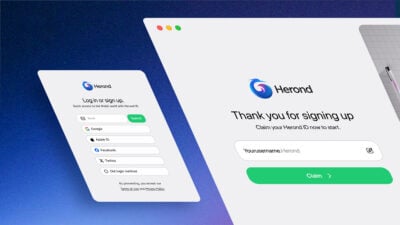Connecting Ethereum with other blockchains typically involves using interoperability solutions, bridges, or protocols that facilitate communication and asset transfers between different blockchain networks. This process enables developers and users to leverage functionalities from multiple blockchains for various use cases.
In this article, we will introduce to you a step-by-step guide of some basic methods to connect Ethereum with other blockchains. Now, let’s get ready to explore the new interesting things in the world of Blockchain technology!
Using Interoperability Protocols
Interoperability protocols refer to standards and frameworks that enable different software systems, networks, or platforms to communicate, interact, and work together seamlessly. In the context of blockchain and decentralized technologies, interoperability protocols play a particularly crucial role because they allow different blockchains or distributed ledger systems to share data and functionalities.
Here is a step-by-step guide to connect Ethereum with other blockchains using Interoperability Protocols:
Step 1: Select the most suitable Interoperability Solution
You should choose an interoperability protocol or technology that facilitates communication and asset transfers between blockchains based on some criterions such as security, decentralization, token standards, community support, etc. Below lists some examples of Interoperability solutions including:
- Polkadot: A multi-chain blockchain platform designed to facilitate interoperability between different blockchains
- Cosmos: A decentralized network of interoperable blockchains designed to overcome the scalability and interoperability challenges faced by existing blockchain platforms.
- Wrapped Tokens: Tokens on one blockchain pegged to the value of assets on another blockchain.
Step 2: Deploy Bridge Contracts
Then, you need to deploy bridge contracts on both Ethereum and the target blockchain. To explain, these smart contracts facilitate the locking and unlocking of assets between the two networks.

Step 3: Locking Assets on Ethereum
Users initiate a transaction on Ethereum to lock their assets in the bridge contract. This process often involves sending tokens to a specific address that acts as a custodian.
Step 4: Cross-Chain Confirmation
The bridge contract on Ethereum verifies the locked assets, and a corresponding amount of assets is minted on the target blockchain.
Step 5: Utilizing Assets on Target Blockchain
At the present, users can use the minted assets on the target blockchain for various purposes.
Step 6: Reversing the Process
When users want to move assets back to Ethereum, they initiate a transaction on the target blockchain, which triggers the burning of assets on that blockchain and unlocks them on Ethereum.
From a closer inspection of this method, we will illustrate an example of connecting Ethereum with Other Blockchain using Wrapped Tokens as an Interoperability Solution.
- Choose a Wrapped Token Provider: Select a service or protocol that provides wrapped tokens for the desired assets. Examples include Wrapped Ethereum (WETH) or Wrapped Bitcoin (WBTC).
- Obtain Wrapped Tokens: Users send their assets to the wrapped token provider’s contract on Ethereum. In return, they receive an equivalent amount of wrapped tokens representing their assets.
- Interact with Other Blockchains: Users can use these wrapped tokens on other blockchains or decentralized finance (DeFi) platforms that support the same token standard.
- Redeeming Wrapped Tokens: When users want to move assets back to Ethereum, they send the wrapped tokens back to the provider’s contract. In this stage, the equivalent assets are then unlocked on Ethereum.
Using Token Bridges
Connecting Ethereum with other blockchains using token bridges involves deploying and utilizing smart contracts that lock assets on one blockchain and mint equivalent tokens on another. In this way, token bridges can facilitate the transfer of assets between different blockchain networks while maintaining a pegged or representative value.

Here is a step-by-step guide to connect Ethereum with other blockchains using Token Bridges:
Step 1: Understand Token Bridge Mechanism
- Token bridges typically involve a pair of smart contracts on each blockchain—one for locking assets and one for minting equivalent tokens. The bridge should have mechanisms to ensure a secure and trustless transfer of assets.
Step 2: Choose a Token Bridge Solution
- Several token bridge solutions are available, each with its own set of features and functionalities. Examples of token bridge solutions include the TokenBridge protocol, Wormhole, or specific bridge implementations for particular blockchains.
It is highly recommended to choose based on careful consideration of security, user experience, decentralization and community support aspects to make sure it is the most appropriate one for your needs.
Step 3: Deploy Bridge Contracts
Then, you deploy bridge contracts on both Ethereum and the target blockchain. This can involve interacting with the smart contract code, deploying it on the respective blockchains, and configuring the necessary parameters.
Step 4: Lock Assets on Ethereum
Users initiate the cross-chain transfer by sending assets to the locking contract on Ethereum. This process may involve interacting with a decentralized application (DApp) or a specific smart contract address.
Step 5: Cross-Chain Confirmation
The bridge contract on Ethereum verifies the locked assets, and an equivalent amount of assets is minted or represented on the target blockchain. This confirmation may include a waiting period or additional security measures.
Step 6: Utilizing Assets on Target Blockchain
Users can use the minted assets on the target blockchain for various purposes, such as trading, staking, lending, or interacting with decentralized applications.
Step 7: Reversing the Process
When users want to move assets back to Ethereum, they initiate a transaction on the target blockchain, triggering the burning of assets on that blockchain and unlocking them on Ethereum.
Other Approaches
Besides the two aforementioned methods of connecting Ethereum with Other Blockchains, in which interoperability protocols are the most common and effective way to connect Ethereum with other blockchains, there are still alternative methods and technologies that can be explored.
Cross-Chain Atomic Swaps
Cross-chain atomic swaps enable users to directly exchange assets between different blockchains without the need for an intermediary or a centralized exchange. This method relies on smart contracts and hash timelock contracts to ensure that the swap is atomic and secure.
Decentralized Finance (DeFi) Protocols
Some DeFi protocols and platforms operate across multiple blockchains. Users can interact with these protocols on Ethereum and other blockchains, utilizing the services and features provided by the protocol.
Cross-Chain Messaging
Cross-chain messaging protocols allow for communication and information sharing between different blockchains. These protocols facilitate the transfer of data, such as messages or transaction information, across disparate blockchain networks.

Centralized Exchanges
While not decentralized, centralized exchanges can act as intermediaries for transferring assets between Ethereum and other blockchains. Users deposit their assets on the exchange, and the exchange handles the transfer to the desired blockchain.
Cross-Chain Oracles
Cross-chain oracles provide real-world data from one blockchain to another. These oracles enable smart contracts on different blockchains to access and utilize external information, facilitating more complex and comprehensive cross-chain interactions.
Conclusion
Connect Ethereum with other blockchains is a powerful process because it helps to enable developers and users to leverage functionalities from multiple blockchains for various usage purposes.
Moreover, it is greatly crucial to note that each approach comes with its own set of considerations, trade-offs, and challenges. The selection of methods depends on factors such as the desired level of decentralization, security requirements, ease of implementation, and the specific use case.
About Herond Browser
Herond Browser is a Web browser that prioritizes users’ privacy by blocking ads and cookie trackers while offering fast browsing speed and low bandwidth
consumption. Herond Browser features two built-in key products:
- Herond Shield: an adblock and privacy protection tool;
- Herond Wallet: a multi-chain, non-custodial social wallet.
Herond aims at becoming the ultimate Web 2.5 solution that sets the ground to further accelerate the growth of Web 3.0, heading toward the future of mass adoption.
Join our Community!








